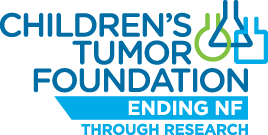The Young Investigator Award (YIA) provides two-year salary support to early-career NF researchers to help them get established as independent NF investigators. Since its inception, several YIAs have made groundbreaking research findings and notable publications through this program, and many have advanced to become leaders in the NF research and clinical communities.
We’re pleased to introduce some of these researchers from the latest class of awardees: Isam Naber (University of California, Los Angeles) is investigating hearing loss in NF2-related schwannomatosis patients by studying mouse models to better understand the underlying biological processes and identify biomarkers that could lead to improved treatments. Passionate about making a meaningful difference for patients, Isam draws inspiration from both the resilience of those affected by NF2-SWN and the mentorship of experts in the field.
 What are you hoping to learn from this project?
What are you hoping to learn from this project?
I hope to focus more on the mechanisms of hearing loss in NF2-SWN mouse models and potentially identify biomarkers that can be clinically implemented. By investigating the cellular and proteomics pathways involved in the peripheral auditory system, I aim to contribute to the development of improved targeted interventions to improve outcomes for patients with NF2-related schwannomatosis.
What has been your experience working in NF so far, and what keeps you passionate about it?
My experience in NF research has been both challenging and rewarding. I am extremely fortunate to work alongside prominent scientists and professors at UCLA who share a common goal of improving the lives of those affected by neurofibromatosis. Learning from their expertise has been invaluable. What keeps me passionate about this field is not only my mentors’ dedication but also the potential to make a tangible impact on patients’ quality of life, particularly in preserving hearing. The complexity of NF and the urgent need for effective control and prevention of hearing loss continue to drive my commitment to this important research area.
Tell us about life in a research lab. What’s a typical day look like?
A typical day in the lab involves a mix of animal work, audiometric testing, microscopy and collaboration with colleagues. I start by reviewing data from previous experiments and planning the day’s tasks. This may include designing experiments, troubleshooting protocols, data collection and preparing samples for analysis. Collaboration is key, so I also spend time discussing findings with my mentors and colleagues and plan what to do next in the ongoing project.
What inspired you to focus your research on NF?
My interest in NF began during my medical education when I encountered patients grappling with the challenges associated with this condition. We often take our senses for granted, but witnessing NF2-SWN patients struggle with impaired vision and hearing highlighted the significant obstacles they face in maintaining a functional quality of life. Their resilience, combined with my new awareness of the gaps in treatment options, motivated me to pursue research in this area. I am particularly inspired by the potential to identify biomarkers that can assess which NF2-SWN patients are at risk of profound hearing loss, ultimately aiming to improve patient outcomes through targeted interventions.
What do you like to do when you’re not in the lab?
Outside of the lab, I enjoy cooking and exploring different cuisines. I also love hiking and spending time in nature, which provides a great balance to my research work. Traveling and learning about new cultures are also passions of mine, as they broaden my perspective and creativity.
What does it mean to you to receive this funding from CTF?
Receiving funding from CTF is not only an honor but also a profound affirmation of my research efforts. I never anticipated that my journey would lead me to such unexpected opportunities. This funding provides vital resources that enable me to pursue my research with greater focus and intensity, reinforcing my ambition to become a physician-scientist in the future. Moreover, this support not only facilitates my scientific endeavors but also enhances the visibility of neurofibromatosis research, fostering collaboration within the community.
Click here to learn more about funding opportunities, including the Young Investigator Awards, from the Children’s Tumor Foundation.

